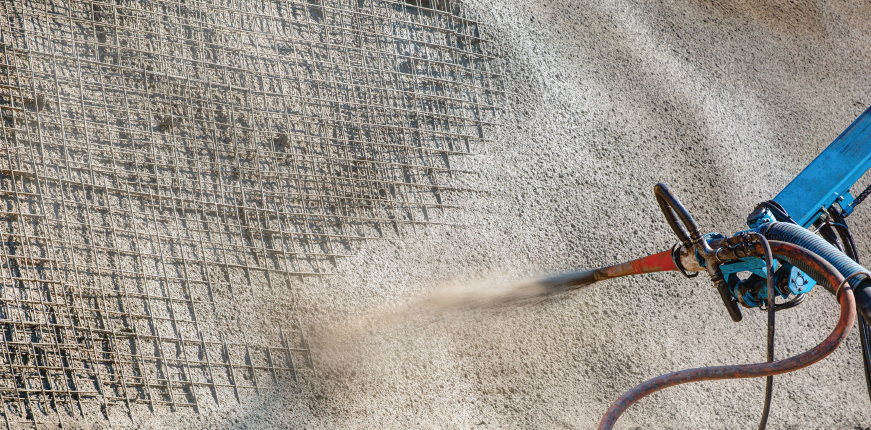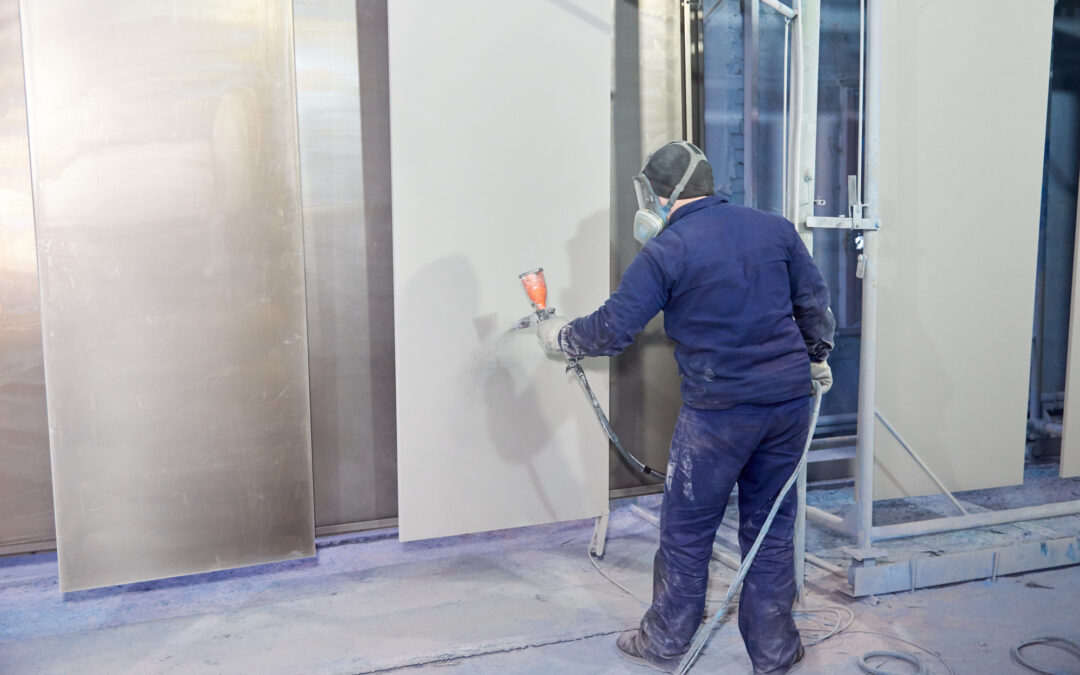There are two types of fireproofing: active and passive.
Active fireproofing (AFP) involves measures that need some action to be effective—for example, using a fire extinguisher or sprinkler system. Passive fire protection (PFP) involves planning safety measures and creating design elements to help manage the spread of fire.
A common type of PFP is cementitious fireproofing, which comes with the cementitious properties of concrete to give it natural fire resistance.
But what exactly is cementitious fireproofing? Read more about how it works and the materials used in this helpful guide.
What is Cementitious Fireproofing?
A cementitious fireproofing material is typically a bag mix that is spray-applied to offer protection from fires. It’s ideal for specialized industries, such as refining, petrochemical, and chemical industries.
Cementitious materials are applied in varying thicknesses to protect the material underneath. Fireproofing contractors use a variety of equipment air to apply the fireproofing material in spray form. This is until it reaches the thickness required by fire rating.
Cementitious fireproofing provides a fire-resistant barrier that is not altered during a fire. In comparison, intumescent linings expand when exposed to extreme heat, which creates a layer of carbon char. The sudden increase in volume acts as an insulating barrier
Where to Use Cementitious Fireproofing
Cementitious fireproofing products come with different qualities. Some are more durable and suitable for areas with high moisture. Others are suitable for conditioned spaces, while others go through freeze and thaw cycles to test durability. You should choose a product that suits your project and aligns with the surrounding environmental conditions.
When cementitious materials are used in high ambient moisture environments, the cementitious coatings create small voids between the substrate and the fireproofing itself. When moisture settles in this space, it can result in corrosion under fireproofing (CUF). This is typically prevented by proper sealing of the fireproofing material and preparation of the steel substrate.
Contracting professionals is a safe bet when seeking fireproofing services. They will guarantee quality and satisfactory work.
Types of Cementitious Fireproofing
Cementitious fireproofing material is practical and usually cheaper than the other options, given the composition of its materials. It measures up to the safety standards of many local and state regulations. There are three main types of cementitious fireproofing.
Standard Density Fireproofing
Standard density fireproofing is ideal in locations that are less likely subject to events of intense weather or harsh environmental conditions.
Standard density fireproofing is also non-combustible. It prevents smoke development and the spread of flames. Moreover, it’s faster to install, cost-effective, and does not crack, break, or delaminate.
Medium-Density Fireproofing
These are cement-based products and hence more durable. Medium-density fireproofing products usually have a density of at least 22 pounds per cubic foot (PCF). Due to this product’s ability to carry a higher bond strength, it is code-compliant with a range of structures.
Cementitious fireproofing manufacturers like medium-density fireproofing because it offers better thermal performance, is easy to install, and is highly durable. It’s suitable for higher moisture areas and used to meet construction code requirements in areas exposed to the elements. This fireproofing can is also usable in unconditioned spaces like parking garages.
High-Density Fireproofing
These types of cementitious fireproofing materials are ideal for industrial fireproofing. Fireproofing manufacturers make high-density cementitious fireproofing from cement-based products with an approximated density of 40 PCF. It’s durable and hard enough to outlast accidental physical damage.
The Benefits of Cementitious Fireproofing Materials
Cementitious fireproofing materials are easy to find, partly because they are easy to manufacture. Their chemical compositions passivate steel, lowering its general reactivity. Thus, they are ideal for shielding structural steel from fire and oxidation, among other threats.
Both normal weight and lightweight cementitious coatings offer a lot of protection when it comes to shielding structural steel from high heat.
Lightweight cementitious fireproofing is lighter and has more thermal resistance than dense concrete. It maintains the advantage of having inexpensive raw materials without the complications of excessive weight. Cementitious fireproofing materials are resistant to very high temperatures and are cost-effective. This is due to their inexpensive raw materials and ease of manufacture.
Choose the Best Cementitious Fireproofing Materials for You
Whether it’s a refining or petrochemical plant, cementitious fireproofing is an effective way to mitigate factors that would escalate a fire and cause serious damage.
We at RCS focus on providing our clients with upper-level results through professional planning, execution, and monitoring of projects. We have a wide selection of highly experienced professionals with the required certifications. We commit to providing value-driven services to meet and exceed your expectations. Contact us today for help with all your fireproofing needs.





